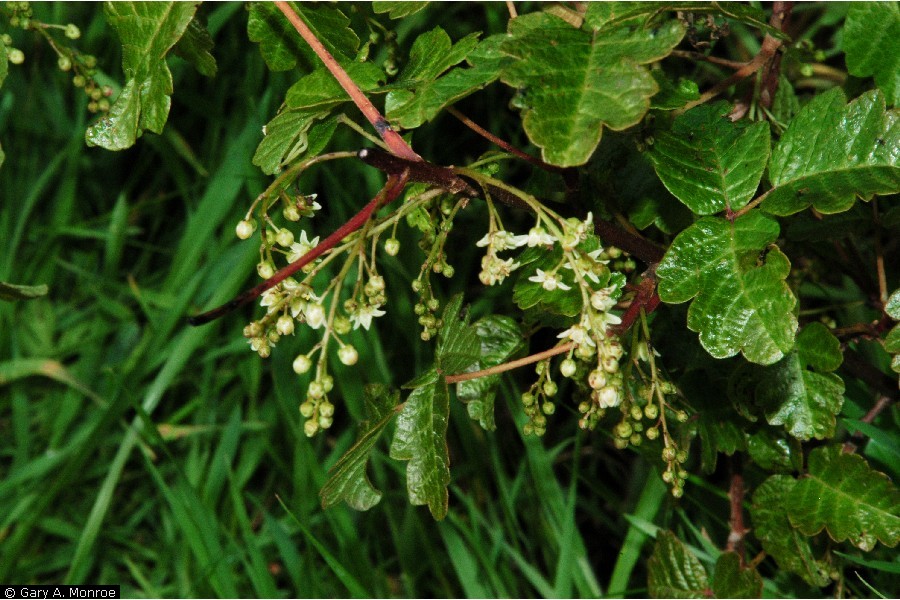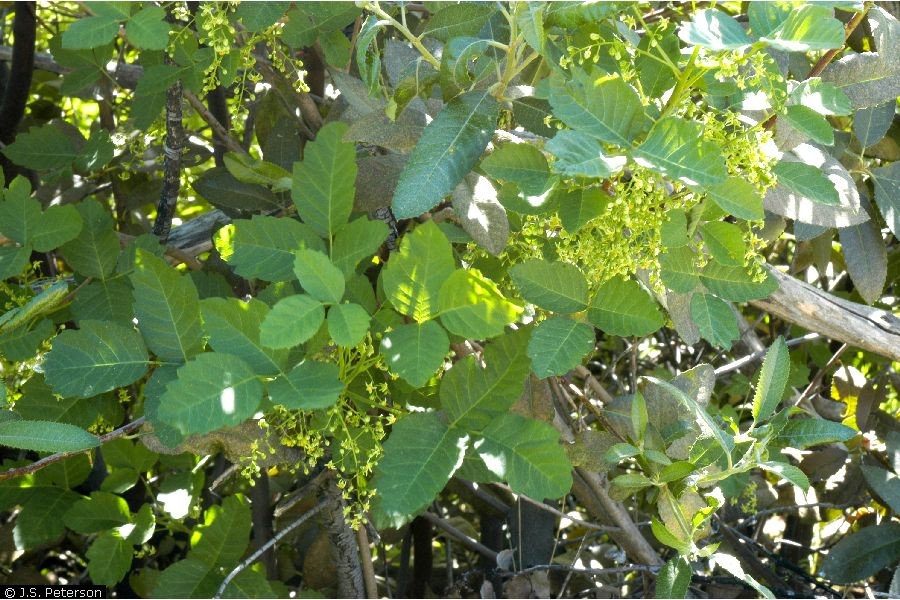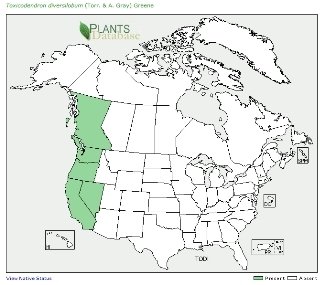Taxonomy: Kingdom - Plantae (plants). Subkingdom - Tracheobionta (vascular plants). Superdivision - Spermatophyta (seed plants). Division - Magnoliophyta (Flowering plants). Class - Magnoliopsida. Order - Sapindales. Family - Anacardiaceae (Sumac family). Genus -Toxicodendron Mill. Species - Toxicodendron diversilobum Torr. & A. Gray
Ecology: Pacific poison oak Pacific poison-oak occurs in mixed evergreen forests, woodlands, chaparral, coastal sage scrub, and riparian zones. It is the most widespread shrub in California. Associates in mixed evergreen forests include Pacific madrone (Arbutus menziesii), sugar pine (Pinus lambertiana), bigleaf maple (Acer macrophyllum), tanoak (Lithocarpus densiflorus), California bay (Umbellularia californica), and chinquapin (Chrysolepsis chrysophylla)



